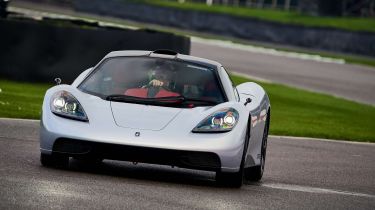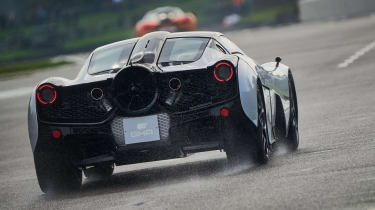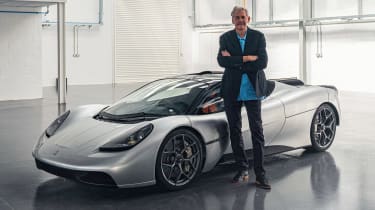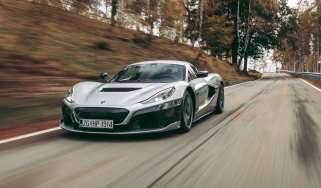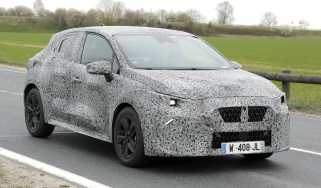Gordon Murray Automotive T.50 makes public debut at Goodwood
Visitors to the 78th Goodwood Members’ Meeting were treated to the GMA T.50 supercar’s V12 soundtrack
Gordon Murray Automotive’s £2.36 million T.50 supercar has made its first public outing at the 78th Goodwood Members’ Meeting, where the new 650bhp supercar coined as Murray’s McLaren F1 successor lapped the Goodwood circuit.
British racing driver Dario Franchitti was picked to showcase the rear-wheel drive T.50’s dynamic abilities, although a damp circuit prevented him from ringing out the 3.9-litre V12’s 12,100rpm red line.
Alongside the dynamic debut of the road-going T.50, there was also a static display of the 725bhp track-only T.50s Niki Lauda and some of Gordon Murray’s greatest race cars, with the intention of highlighting the designer’s “light-weighting ethos.”
Prior to the event, Gordon Murray said: “There’s no better place to show and demonstrate the T.50 than the Goodwood Members Meeting. It’s been frustrating not to be able to show our supercar before, but for everyone intending to visit Goodwood, it will certainly be worth the wait. I’m looking forward to it – it’s going to sound superb”.
The high-pitched wail of the T.50 will certainly set it apart in an age where most supercar makers are looking to turbocharging and hybrid systems to maximise internal engine combustion performance.
Production numbers for the road-going T.50 will be limited to just 100 examples, the first of which are expected to arrive next year. Once they’re all built and accounted for, GMA will start production of the T.50s Niki Lauda, of which there’ll be just 25.
Gordon Murray Automotive T.50: design and specs
Famed automotive engineer Murray describes the T.50 as a true analogue supercar and the perfect antidote to increasingly heavy modern hypercars.
Murray penned the T.50 as a celebration of his 50th year in Formula One and road car design – and the finished car features his usual bantam-weight engineering with an added dash of his trademark aerodynamic lunacy. So, the T.50 features ground-effects and a purpose-built V12 engine from Cosworth, while all of the major components have been sourced from UK firms.
Murray explains that the T.50’s design is an exercise in purity, emphasising the absence of large wings, flaps or vents, found on contemporary supercars and hypercars. As such, the low nose of the vehicle is smooth and unspoiled by a large splitter or canards, and is reminiscent of the McLaren F1.
“It looks even better than I hoped,” he told us during a walkaround with the car. “There’s not a single surface on this car that I’m not happy with. It looks really cool, and a massive change from the current crop of supercars. There seems to be a war to see who can make the most outrageous-looking car with swoops and ducts and wings. This one’s pretty pure like the F1.”
Ground-effect aerodynamics
Against the tape, the T.50 is 4,352mm long, 1,850mm wide – giving it a footprint that’s a little larger than a Volkswagen Golf’s – and 1,164mm tall. Crucially, weight is kept below one tonne, at 986kg with fluids. The chassis is bonded carbon-aluminium, while the bodywork is carbon fibre.
However, the T.50’s most obvious revision over the McLaren F1 is at the rear, where a large fan is found. It’s an engineering feature Prof Murray has used before, most notably on the infamous BT46B Fan Car that raced – and won – the only event it competed in during the 1978 F1 season. Its success ensured that the technology was subsequently banned from the sport.
The fan provides the T.50 with true ground-effect aerodynamics, without the need for any large wings or splitters. It operates in many configurations, increasing downforce by 100 percent in “braking mode,” allowing the T.50 to come to a complete stop 10 metres shorter from 150mph than it could otherwise.
A small positive side effect of the fan is that it also provides an extra 15kg of thrust. Murray revealed to Auto Express that a twin-fan arrangement was considered during the McLaren F1’s development, but that time constraints ruled it out.
Engine and performance
The T.50’s drivetrain is another nod to analogue supercars of the past. Professor Murray commissioned Cosworth to help develop a naturally aspirated 3.9-litre V12 engine, which can rev to 12,100rpm – making it the highest-revving road-going V12 in history. The V12 develops 654bhp as standard and up to 690bhp with ram induction, while peak power arrives at 11,500rpm.
The mid-mounted motor is fully on show in the engine bay, unobscured by covers. “This is such a killer engine Cosworth has done. It’s so far ahead of anything else that’s ever been produced in its weight, layout, maximum revs and power density. In particular, the responsiveness is light-years ahead,” Murray told us.
No performance figures have been revealed just yet; according to Murray, they aren’t the point of the T.50. “The reality of chasing top speeds only adds weight, notably through ever-more powerful engines, which increase the requirement for larger, heavier ancillaries. We are taking a very different approach,” he explained.
Drive is sent to the rear wheels, and the T.50 features a bespoke six-speed manual gearbox developed by specialist Xtrac. Several drive modes have also been confirmed, including a streamline setting that creates a “virtual longtail,” a high-downforce mode to make the most of the fan’s ground effect, and a V-Max setting for top-speed runs, using ram induction to boost power to 690bhp. Alternatively GT mode restricts the engine, making the T.50 more user-friendly.
The feature most reminiscent of the McLaren F1 is found inside, with a three-seat layout placing the driver centrally and ahead of two passengers. Behind the wheel is a rev counter flanked by two large screens, and Murray promises a driver-oriented environment with simple, tactile controls. Creature comforts include a 10-speaker stereo, smartphone connectivity and a pair of screens instead of wing mirrors.
And, there’s already a harder, track-only version, called the T.50s Niki Lauda. It’s even lighter than the standard supercar, it has 725bhp and it generates more downforce, thanks to the addition of the imposing wings and flaps Murray wanted to avoid on the road car.
Production plans
The T.50 will be built at a factory in Dunsfold, Surrey, but once the production run has ended, the Gordon Murray Group will move into a new £50 million campus down the road in Windlesham, a move that will also create 100 new jobs.
The Windlesham campus will consist of three new buildings. The first phase of construction will create a vehicle manufacturing centre, customer sales department and the Gordon Murray Group heritage collection. Further buildings, due for completion by 2024, will include a research and development hub, plus sales and marketing centres for the GMA products that follow the T.50.
A road course for fine tuning products will also be built on site. This will include a rough section of Belgian Pavé - a stretch of stone cobbles used to test a car’s build quality and the endurance of suspension components to their limits.
Gordon Murray Q&A
Gordon Murray introduced his car personally to media ahead of its reveal. Our deputy editor John McIlroy caught up with the legendary designer – and the T.50.
Q: Why are you making this type of car – an indirect successor to probably your most famous creation, the McLaren F1?
A: “Well, if you look back, I honestly don’t think anybody’s done an F1 since the F1 – that much absolute focus on the driving enjoyment and the light weight. And a car with no targets – no top speed, 0-62mph or lap time at the Nürburgring to think of.
“There are plenty of cars out there that are much more capable than the F1 – the turbos, the hybrids – but none of them gives me the spine-tingling sensation that the F1 gives me. Some people still say that you can’t beat the driving experience of an F1. But I can tell you this is going to move the game on again.”
Q: This is the launch car for Gordon Murray Automotive. What are your brand’s core values?
A: “Our three targets are to be the lightest car, the best driving experience and the best engineering in whichever sector the car is positioned.”
Q: And you’re definitely going to stick to no more than 100 cars per year?
A: “Never more than a hundred. Of anything. We have specifically not gone for capacity beyond that figure.
Q: You’re probably not going to tell us what type of car is coming next, then…
A: “Well, we have an eight-year plan, but I’m keen to get the T.50 out of the door first. We’ll start delivering cars to customers at the beginning of 2022.”
Q: Can you resist the temptation to make an SUV?
A: “Yes.”
Gordon Murray’s road car catalogue
McLaren F1
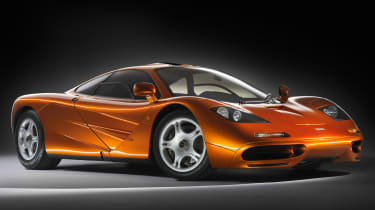
Money-no-object hypercar rewrote benchmarks in 1993. Just 64 road cars were made; values today exceed £15m.
LCC Rocket

Track-day flyer had the looks of a fifties racer but awesome pace, with a Yamaha bike engine pushing just 380kg.
Mercedes SLR McLaren
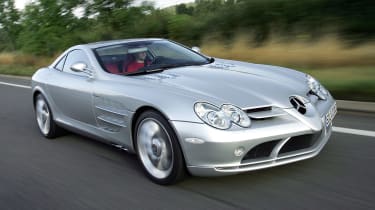
Supercharged V8 super-coupe was an homage to Merc’s 300 SLR. It was produced at McLaren’s factory in Surrey.
Yamaha Sports Ride
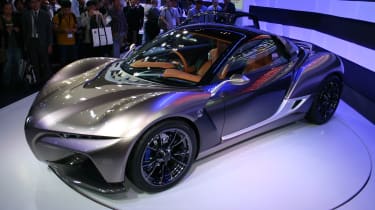
Curvy coupe stunned showgoers at the 2015 Tokyo show, but production version never made it beyond planning.
Motiv

Earlier T.25 and T.27 city cars failed to reach buyers, but single-seat quadricycle looks more relevant by the day.
Ox
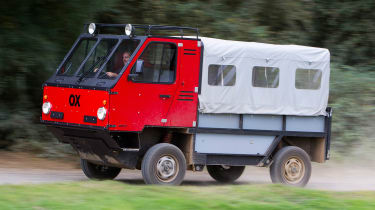
Flat-pack vehicle is designed to be shipped to developing regions and then assembled there using local labour.
What are the best supercars on sale right now? Click here for our top 10...
Find a car with the experts

